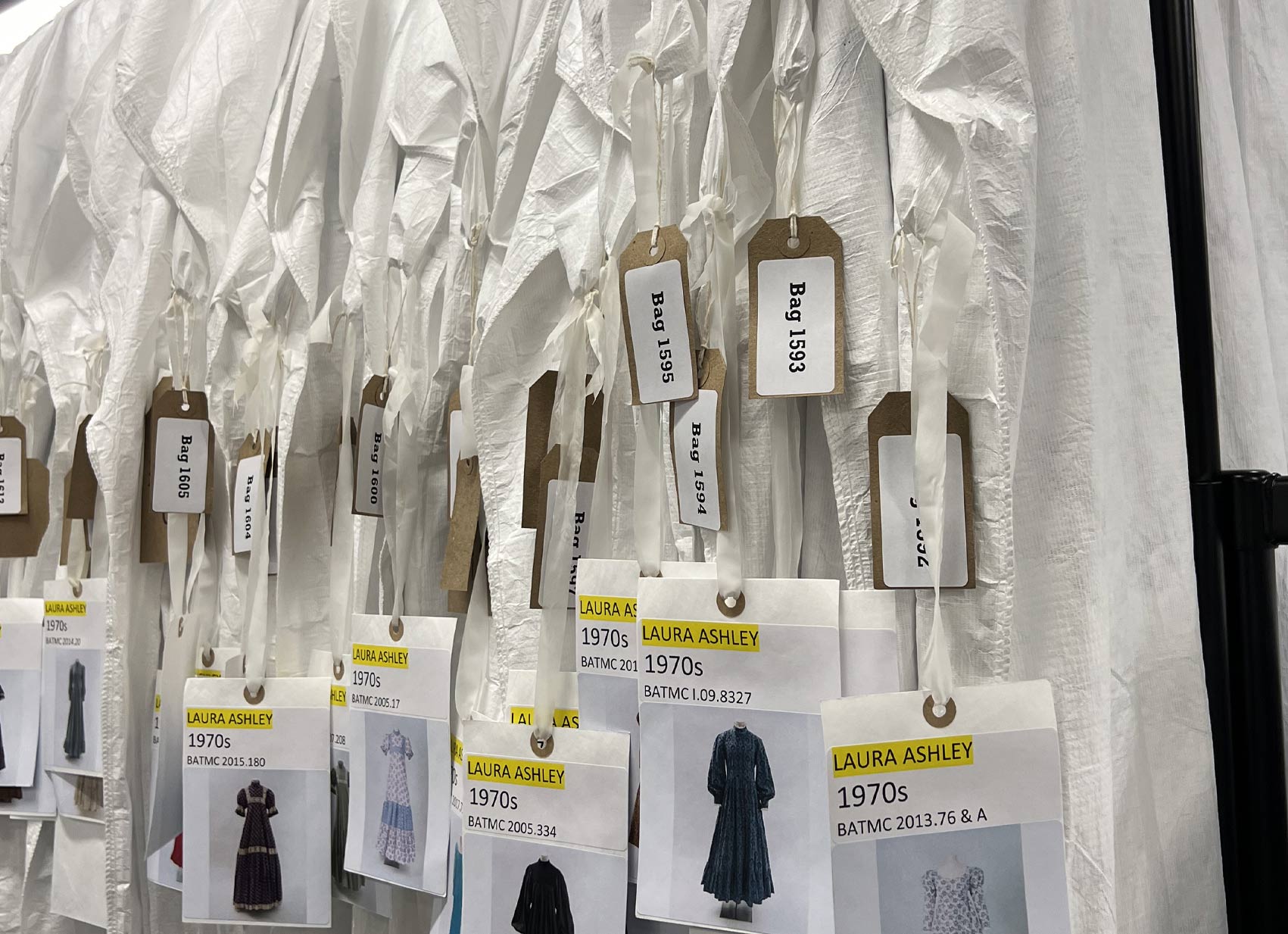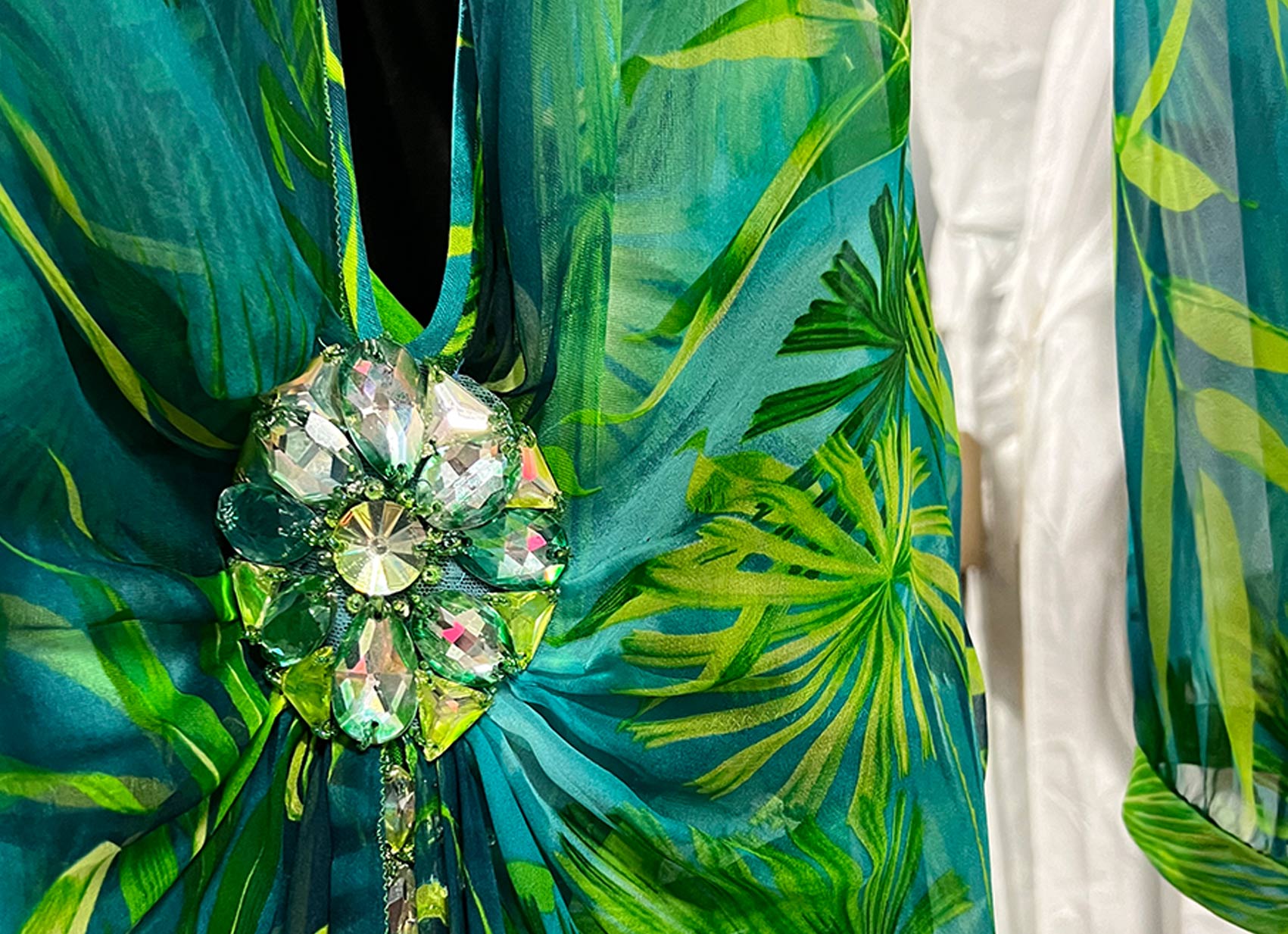Gabby Shiner-Hill explores the history of fashion at the Fashion Museum Bath
Co-founder of material digitisation experts Bureau 555 and founder of shinerhilldesign Gabby Shiner-Hill takes us on a tour of fashion history.
As part of my new MyWorld Fellowship, I'm going to be digitising one of the Fashion Museum Bath Dress of the Year fashion pieces.
My Fellowship started in mid-February of this year and I have spent the last few months deep in research, meeting with stakeholders and navigating the lay of the land in my new role.
In March, I had the opportunity to visit the museum's new storage facility at Dents Glove Factory near Warminster. I met with Rosemary Harden, curator, and Laura Gibson, documentation manager, who guided me through the museum's pieces and told me about the history of the collection and the monumental task of relocating it to the current storage facility.

The Fashion Museum Bath was established by Doris Langley Moore in the early 1960s. With a collection of around 100,000 objects, the museum holds a significant place in the world of fashion curation. However, while the museum was located in The Assembly Rooms in Bath, the collection itself was spread across 38 locations.
In 2022, the move from The Assembly Rooms enabled the museum to bring the entire collection to Dents as they await their move into their permanent home in the Old Post Office in the centre of Bath.
Over the past two years, the small team at the Fashion Museum Bath has been organising this vast collection. Each object now has its own unique identification, including an object number, row number, and shelf number. As Rosemary led me through the facility, I was struck by the sheer diversity of items housed there.
From vintage mannequins to design archive books from British designers, yarn cards from Donegal yarn manufacturers to old trunks, every shelf and rail held a piece of fashion history. Even the handwritten donation cards for each object serve as a testament to the history of the museum.
As part of my Fellowship, which focuses on the fashion fidelity of digital assets, I am seeking to understand how digitisation could benefit the Fashion Museum. However, before addressing this topic, I was keen to learn about the museum's unique "Dress of the Year" collection.
The "Dress of the Year" collection, initiated by Doris Langley Moore in 1963, is a rare gem in museum history. It aims to encapsulate the essence of a particular year through one iconic outfit. This annual tradition highlights the evolving landscape of fashion over the decades.
Each year a notable figure in the fashion industry is selected to choose the dress they believe best represents the zeitgeist. These selections, ranging from the avant-garde to the classic, not only highlight renowned designers but also offer insights into societal trends and cultural influences.
After research and consultation with Rosemary and Laura, we shortlisted nine outfits for my project. However, selecting the final dress for digitisation was not easy. We considered factors such as the selector, the designer, and the emotional resonance associated with each piece and what current technical restrictions there are when digitising – for example, it can be difficult to digitise feathers, glitter and shiny black fabrics.

We then moved on to explore ‘what does digitisation mean?’ in the context of the Fashion Museum. While there is considerable work to be done to learn more about how digital twins of physical garments might be used in digital environments as well as in fashion industry workflows, my Fellowship is focussing on the following:
- Understanding best practices of digitisation of fashion, using photography, scanning, 3D garment creation and 3D modelling.
- Exploring the transition from physical garments to digital garments while maintaining the most important visual characteristics of physical artefacts, for example texture, weight, and flow.
One of the questions we are exploring is: ‘How can creating a digital version of a physical garment increase access to and engagement with the museum’s objects?’ With this in mind we will be user-testing digitised fashion prototypes with peers and audiences and assets will be shared as the Fellowship progresses.
This Fellowship came about because of an on-going collaboration between Bath Spa University and Fashion Museum Bath. One of the outcomes of that collaboration will be an archive study centre where students and members of the public will be able to research the museum’s collection in a purpose-built facility at the University’s Locksbrook Campus.
The opportunities for more projects that bring together the technical facilities supported by MyWorld and digital fashion are considerable and my MyWorld Fellowship is a first step toward exploring those possibilities.